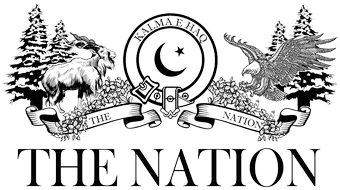“For God’s sake, this man cannot remain in power,” Joe Biden told a crowd in Warsaw in 2022, one month after Putin’s invasion of Ukraine. A few days later, then-U.S. Secretary of State Antony Blinken clarified Biden’s remarks: “As you know, and as you have heard us saying repeatedly, we do not have a strategy of regime change in Russia, or anywhere else.” As if he had seemingly forgotten about Uruguay, Chile, Iraq, Afghanistan, and several other nations still facing the consequences of U.S. regime-changing strategies.
Regime change can be defined as the forcible or coercive replacement of a state’s ruling elite or governance structure by external actors, often to install a successor more aligned with international norms—or U.S. interests. Every state has the right to sovereignty. Yet, throughout history, states have meddled in others' internal affairs to change governments that do not align with their political, racial, religious ideologies, fears, or desire for dominance.
Post-WWII, the global order was shaped to discourage such interference, as outlined in the UN Charter. Article 2(4) prohibits the use of force against the territorial integrity or political independence of any state, while Article 2(1) enshrines the principle of sovereign equality. However, paradoxically, international law also paves the way for regime change under certain circumstances. Chapter VII of the UN Charter grants the Security Council the authority to respond to “threats to peace, breaches of the peace, or acts of aggression,” initially through non-military measures like sanctions or arms embargoes, and ultimately through military intervention as a last resort. Yet the U.S. has repeatedly toppled foreign governments to serve its own strategic goals.
The first recorded U.S. attempt at regime change was in 1893, when Queen Liliuokalani of Hawaii sought to enact a new constitution to restore monarchical power—posing a threat to U.S. sugar planters. In response, a group of American planters overthrew her with the support of the U.S. government. A provisional government led by Sanford B. Dole was installed, which lobbied successfully for U.S. annexation under the Newlands Resolution in 1898. Through Hawaii, the U.S. projected power into the Pacific by establishing a naval base at Pearl Harbor, which was later attacked by Japan—prompting America’s entry into WWII. Around the same time, during the Spanish-American War, the U.S. also invaded Cuba and forced Spain to cede Guam, Puerto Rico, and the Philippines.
In the 20th century, Nicaragua became a major focus of U.S. foreign policy in the 1970s. The U.S. initially supported Gen. Anastasio Somoza’s government, which was also backed by Israel and Guatemala. Although useful to U.S. anti-communist efforts during the Cold War, Somoza's brutality became excessive. Under international pressure and regional unrest, the U.S. supported an Organization of American States (OAS) resolution calling for the "immediate and definitive replacement of the Somoza regime," contingent on support from the Sandinista Liberation Front (FSLN). The Sandinistas framed themselves as democratic and pluralist, gaining widespread support. However, once in power, they instituted a communist regime, prompting the U.S. to back the Contras—a counter-revolutionary group accused of severe human rights abuses. The result: over 30,000 Nicaraguans killed.
The year 1979 alone witnessed multiple unilateral regime changes. Tanzania invaded Uganda to oust Idi Amin and installed a former president. France invaded the Central African Empire, imprisoning Emperor Jean-Bédel Bokassa and reinstating David Dacko. Vietnam invaded Cambodia to remove the Khmer Rouge and placed Hun Sen in power. The Soviet Union invaded Afghanistan, killed President Hafizullah Amin, and replaced him with Babrak Karmal (later substituted by Dr. Najibullah). Of these, only the Soviet Union maintained its occupation. In 1982, Israel invaded Lebanon in an attempt to install Bashir Gemayel as president—only for him to be assassinated days later, collapsing their plan.
In many instances, states tried to legitimize their actions under the guise of legality or, when convenient, maintained strategic silence. In 1919, for instance, when the Allied powers tried to overthrow the Bolshevik regime by supporting the White Army, Winston Churchill ironically remarked: “Were they at war with Soviet Russia? Certainly not; but they shot Soviet Russians at sight... Interference—shame!” The Allies avoided declaring war to escape legal consequences while actively engaging in hostile actions. A similar tactic was used in Chile in 1973, when the U.S. covertly overthrew democratically elected President Salvador Allende.
The Cold War era became a ruthless chessboard of ideological dominance, where nations were used as pawns. From Kennedy’s failed 1961 Bay of Pigs invasion of Cuba, to Johnson’s 1965 invasion of the Dominican Republic, to Reagan’s 1983 intervention in Grenada, the U.S. continually replaced unfriendly regimes. The Soviet Union and China did the same in their spheres of influence, whether in Central Europe or Tibet. These regime changes were not about democracy—they were about power.
The Iraq invasion in 2003 was the pinnacle of U.S.-led regime change. Based on false intelligence about weapons of mass destruction (WMDs), the Bush administration launched a full-scale invasion. It bypassed international law, led to the deaths of millions of civilians, ignited sectarian violence, birthed ISIS, and destabilized the entire Middle East—all while siphoning off its oil wealth.
The U.S.’s history of regime change is a recurring pattern, shaped by strategic, ideological, and economic motives. From the overthrow of Queen Liliuokalani in 1893 to the disastrous invasion of Iraq, American interventions have often cloaked power politics under the veil of spreading democracy. These actions have frequently resulted in destruction, displacement, and decades-long instability in affected countries.
The U.S.’s role as a self-proclaimed peacekeeper has eroded. Its dominance has fueled unchecked Israeli brutality against Palestinians in the West Bank. Having exploited its unipolar moment, the U.S. is now watching the world reshape itself—its post-Cold War leadership slowly unraveling.






